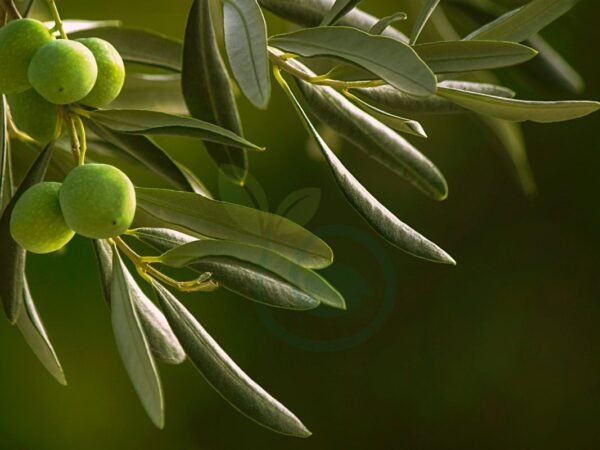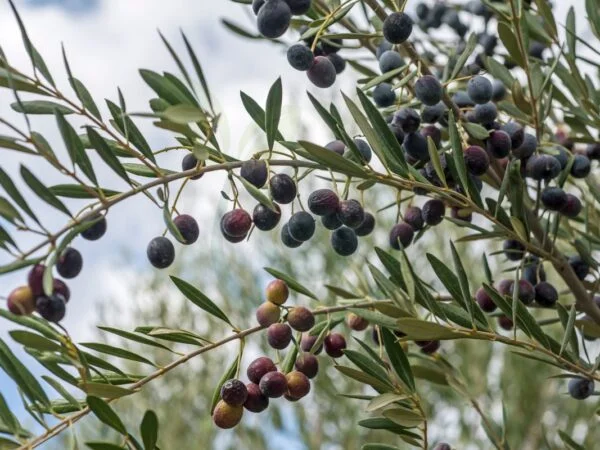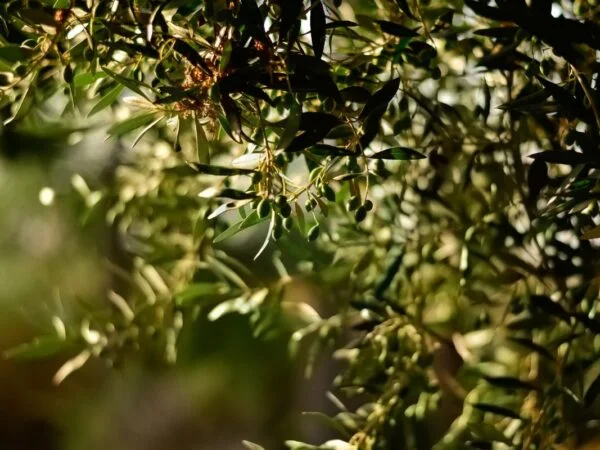Ever wondered where olive trees thrive within the United States? Curiosity piqued about these Mediterranean treasures finding a home on American soil? Well, get ready to uncover the surprising locations where these iconic trees flourish. From the sun-kissed landscapes of California's Central Valley to the charming orchards dotting Arizona and Texas, olive groves have found their niche in unexpected corners of the country. Join us as we explore how these resilient trees adapt and produce their coveted fruit in diverse climates across America.
Key Takeaways
- Consider planting olive trees in regions like California, Texas, and Arizona for successful cultivation in the U.S.
- Choose appropriate olive varieties such as Arbequina, Arbosana, and Koroneiki that thrive well in the U.S. climate.
- When selecting a site for olive tree cultivation, prioritize well-drained soil, full sun exposure, and protection from strong winds.
- Ensure proper spacing and depth when planting olive trees to promote healthy root development and optimal growth.
- Implement cultivation practices like pruning, fertilizing, and irrigation to maintain the health and productivity of olive trees.
- Explore various methods of processing olives such as curing, pressing, and brining to enjoy homemade olive products.
Olive Tree Cultivation in the U.S.
History Overview
Olive trees have a rich history, dating back thousands of years to ancient civilizations. The Mediterranean region is where olive tree cultivation originated, and olive oil has been integral to various cultures throughout history. Its significance transcends mere sustenance; it symbolizes peace, purity, and even divine wisdom. The process of cultivating olives has evolved over years but remains deeply rooted in tradition.
The growth regions for olive trees in the United States mirror those of the Mediterranean climate: California, Texas, Arizona, and Florida. These areas boast mild winters and hot summers that are ideal for olive tree growth. However, within these states lie microclimates that can influence the success of olive cultivation significantly. Factors like soil quality, elevation levels, and proximity to bodies of water all play crucial roles.
Notable Orchards
California stands out as a hub for notable olive orchards in the U.S., with regions like Napa Valley and Paso Robles being home to renowned groves. Each orchard might focus on specific varieties or production methods tailored to their unique conditions or consumer preferences. In Texas too, several prominent orchards such as Bella Vista Ranch in Wimberley and Texas Hill Country Olive Company in Dripping Springs showcase diverse approaches to olive cultivation.
Olive Varieties in the U.S.
Essential Characteristics
Olive trees in the United States are known for their evergreen nature, reaching heights of up to 30 feet and boasting a wide canopy of silvery-green leaves. These trees have deep roots that help them survive dry spells by accessing water deep underground. Their production begins with small, sweet-smelling flowers that eventually transform into olives, ready for harvesting.
Understanding these essential characteristics is crucial to ensure optimal growth and fruit production. The ability of olive trees to thrive in arid conditions makes them suitable for various regions across the United States where water availability may be limited. This resilience allows olive farmers to cultivate these trees successfully even in semi-arid climates like those found in parts of California and Texas.
Selecting Varieties
In the U.S., there is a diverse selection of olive varieties available for cultivation, each offering unique qualities and flavors. Popular choices include Arbequina, known for its mild flavor; Mission, favored for table olives; Manzanillo, ideal for both eating fresh and processing into oil; and Frantoio, prized for its robust oil production capabilities. When deciding on which variety to plant, factors such as local climate conditions and intended use play a significant role.
Selecting the right variety is akin to choosing different ingredients when cooking - each brings its own distinct taste profile or texture that can enhance specific dishes or applications. For example, if you prefer using olives primarily as a snack or appetizer (table olives), you might opt for Mission due to its larger size and rich flavor when cured properly. On the other hand, if your goal is producing high-quality olive oil with fruity notes perfect for drizzling over salads or dipping bread into, then Frantoio could be an excellent choice.
Factors for Site Selection
Growing Conditions
Olive trees thrive in well-drained soil with a pH level ranging from 5.5 to 8.5, ensuring optimal growth and fruit production. They bask in the glory of full sun exposure, needing this to flourish and bear fruits effectively. Proper spacing between olive trees is crucial as it allows for adequate air circulation and sunlight penetration, aiding in their overall health.
When planting olive trees, consider that they can withstand drought conditions but are susceptible to damage from extreme cold or frost. To ensure proper flowering and fruit set, these trees require a specific number of chilling hours during winter months. high humidity levels during the growing season pose a risk as they can lead to various diseases affecting olive trees' well-being.
Weather Considerations
-
Olive trees need well-drained soil with a pH range of 5.5-8.5.
-
Full sun exposure is vital for optimal growth and fruit production.
-
Adequate spacing ensures proper air circulation among olive trees.
-
Olive trees are tolerant of drought but vulnerable to extreme cold.
-
Chilling hours in winter stimulate flowering and fruit development.
-
High humidity levels increase disease susceptibility in olive trees.
In regions where olive tree cultivation thrives, such as California's Central Valley or parts of Texas, these factors play an essential role in site selection for successful orchards. The Mediterranean-like climates found in these areas provide ideal conditions for cultivating olives due to their similarities with the tree's native environment.
The success of growing olives hinges on understanding these critical factors when selecting sites across the United States that mimic the favorable conditions found in traditional olive-growing regions worldwide.
Planting Olive Trees
Purchasing Trees
When planting olive trees, ensure to acquire healthy specimens from reputable nurseries. Opt for grafted trees as they offer enhanced disease resistance and better fruit production. Choose varieties that thrive in the specific climate of your region to ensure successful growth.
To avoid future issues, carefully inspect the trees before purchasing them. Consider factors like leaf health and overall appearance to guarantee you are selecting top-quality olive trees for planting.
- Pros: Healthy specimens, improved disease resistance, suitable varieties
- Cons: Higher initial cost, limited availability at local nurseries
Planting Process
Prepare the soil by eliminating weeds and enhancing drainage if necessary before planting olive trees. Dig a hole slightly larger than the root ball of the tree and fill it with a mixture of soil and organic matter to provide essential nutrients for growth.
After placing the tree in the hole, backfill gently around its roots while ensuring stability. Water thoroughly immediately after planting to help establish strong roots early on.
- Remove weeds and improve drainage
- Dig a hole larger than root ball size
- Fill with soil and organic matter mixture
- Water generously post-planting
Cultivation Practices
Coping with Adverse Weather
To ensure the successful growth of olive trees in the US, it is essential to protect them from extreme weather conditions. Young olive trees should be shielded from severe cold or frost by covering them with blankets or utilizing protective structures. Mulching around the tree's base plays a crucial role in regulating soil temperature and retaining moisture during hot weather spells. Adequate irrigation is vital during dry periods to sustain tree health and productivity.
In challenging climates, such as those found in certain regions of the US where olive farms are established, these practices become even more critical for optimal tree growth. By implementing these measures, farmers can safeguard their olive trees against adverse weather effects and promote healthy development throughout different seasons.
Harvesting Techniques
Two primary techniques are commonly employed: handpicking and mechanical shaking. Handpicking allows for a selective approach to gathering ripe olives, ensuring only fully matured fruits are collected. On the other hand, mechanical shaking is favored for its efficiency in handling large-scale operations where manual labor may not be feasible at scale. Timing plays a pivotal role in harvesting olives successfully; they must be gathered at the perfect stage of ripeness to achieve desired flavor profiles.
In regions where olive trees thrive in the US climate, such as California and Arizona, mastering these harvesting methods becomes integral for farm productivity and profitability. Farmers can maximize their yield potential by adopting suitable harvesting techniques based on factors like orchard size and resource availability.
Processing Olives
Curing Olives
Curing olives is crucial to remove their bitterness, enhancing their taste. Different methods like brine curing, water curing, or dry curing are used. Each method requires specific soaking times and treatments for desired flavors and textures. After the curing process, olives can be further enhanced with herbs, spices, or oils to add more depth to the flavor.
- Brine curing involves soaking olives in a saltwater solution.
- Water curing includes submerging olives in water that needs regular changing.
- Dry curing entails packing olives in salt without any liquid.
Homemade Oil Production Producing olive oil at home involves crushing olives into a paste and then separating the oil through pressing or centrifugation. The quality of homemade olive oil depends on various factors such as the type of olive used, its ripeness level when harvested, and different processing techniques applied during extraction. To ensure premium taste and nutritional value in homemade olive oil production, fresh high-quality olives should be utilized.
- Crushing the olives releases their natural oils.
- Separating the oil from other components results in pure olive oil.
Benefits of Olive Trees
Texas Olive Oil Benefits
Texas olive oil stands out for its distinct flavors shaped by the unique climate and soil conditions of the region. The hot, arid environment in Texas contributes to the rich taste profile of the olives grown there. This local olive oil is not only flavorful but also packed with health benefits.
With a high concentration of monounsaturated fats and antioxidants, Texas olive oil offers a healthy option for cooking and dressing salads. These components are known to promote heart health, reduce inflammation, and provide essential nutrients for overall well-being. By incorporating Texas olive oil into your diet, you can enjoy delicious meals while supporting your health.
Furthermore, choosing locally produced Texas olive oil supports the state's economy by backing small-scale farmers and producers. By purchasing from these local sources, you contribute to sustainable agriculture practices that are vital for environmental conservation and long-term food security. Supporting local businesses helps create a more robust community network while enjoying premium-quality products straight from Texan groves.
Home Cultivation Tips
Survival in Different Regions
Olive trees can thrive in various regions across the United States, but their success hinges on the climate and growing conditions. Some areas might necessitate extra care like winter protection or irrigation to ensure tree survival. Understanding the microclimates within a region is crucial for choosing suitable olive tree varieties. For example, planting cold-hardy types in cooler regions can enhance survival rates.
In certain parts of the U.S., olive trees may need additional measures for successful cultivation due to extreme weather conditions. Providing winter protection like frost cloth or mulching around the base of the tree can help shield it from harsh temperatures. In warmer climates, proper irrigation methods are vital to combat drought stress and promote healthy growth. By assessing your specific region's climate and soil conditions, you can tailor your olive tree care practices accordingly.
Home Cultivation in Texas
Texas offers favorable conditions for cultivating olive trees, especially in areas with Mediterranean-like climates that mirror those found where olives naturally flourish. Choosing cold-hardy varieties suited to Texas' varying climates is essential for successful home cultivation projects. Implementing proper pruning techniques helps maintain tree health and encourages optimal fruit production.
For those looking to grow olive trees at home in Texas, selecting well-draining soil is key as these trees despise standing water which could lead to root rot issues. Providing adequate sunlight exposure ensures robust growth and fruit development throughout the season. Pruning dead branches regularly not only enhances aesthetics but also promotes air circulation among branches which aids overall tree health.
Challenges and Solutions
Adverse Weather Coping
Olive trees, known for their resilience, can endure drought but might need extra watering in prolonged dry periods. Safeguarding young trees from severe cold or frost is vital for their survival. Proper drainage and soil care are essential to minimize damage from heavy rain or flooding.
Olive tree growers face the challenge of ensuring the trees receive adequate water during dry spells while also protecting them from extreme cold and frost that can harm young plants. Heavy rainfall and flooding pose risks that can be mitigated with proper drainage systems and soil management practices.
- Olive trees are hardy against drought but may require additional irrigation.
- Protecting young trees from frost is crucial for their survival.
- Adequate drainage and soil management help prevent damage from heavy rainfall.
Selecting Appropriate Varieties
Choosing the right olive tree varieties plays a significant role in successful cultivation. Consider factors like climate suitability, intended use (table olives or oil production), and disease resistance when selecting varieties. Seek advice from local experts or agricultural extension services for recommendations on suitable varieties in your area. Experimenting with different types can help identify which ones thrive best in your specific growing conditions.
Selecting appropriate olive tree varieties involves considering various factors such as climate compatibility, intended purpose (table olives versus oil production), and resistance to diseases prevalent in your region. Consulting local agricultural experts or extension services can provide valuable insights into choosing the most suitable varieties for optimal growth outcomes.
- Factors like climate suitability impact the choice of olive tree varieties.
- Consultation with local experts helps determine suitable varieties.
- Experimentation aids in identifying thriving olive tree types under specific growing conditions.
You've now got the lowdown on cultivating olive trees in the U.S. From choosing the right variety to tackling challenges, you're armed with the knowledge to kickstart your olive-growing journey. Remember, like any endeavor, growing olives takes time and effort but reaps delicious rewards. So, roll up your sleeves, get your hands dirty, and watch those olive trees flourish!
Now that you're equipped with these insights, it's time to put them into action. Grab your gardening tools, pick out your favorite olive variety, and start planting! Don't be afraid to experiment and learn along the way. Your olive grove awaits – go make it thrive!
Frequently Asked Questions
Where do olive trees grow in the U.S.?
Olive trees thrive best in regions with a Mediterranean-like climate, such as California and Arizona. These states provide the ideal conditions of sunny days, well-drained soil, and mild winters for successful olive cultivation.
How can I choose the right variety of olive tree to plant?
Select an olive tree variety based on your location's climate and purpose (oil production or table olives). Common varieties like Arbequina, Mission, and Manzanillo are suitable for different climates and uses.
What factors should I consider when selecting a site to plant olive trees?
Ensure your chosen site has full sun exposure, good drainage to prevent waterlogging, adequate air circulation, and sufficient space for mature tree growth. Avoid low-lying areas prone to frost pockets or high winds.
Is it challenging to grow olive trees at home?
While not overly difficult, growing olive trees at home requires attention to detail regarding watering frequency, soil quality maintenance, pruning techniques, and pest control. With proper care and dedication, you can successfully cultivate olives in your backyard.
What are some benefits of having olive trees on my property?
Apart from providing fresh olives for culinary use or oil production, having olive trees enhances your landscape aesthetics with their silvery-green foliage. They attract beneficial insects while being drought-tolerant once established.
Image Source: Paid image from CANVA




